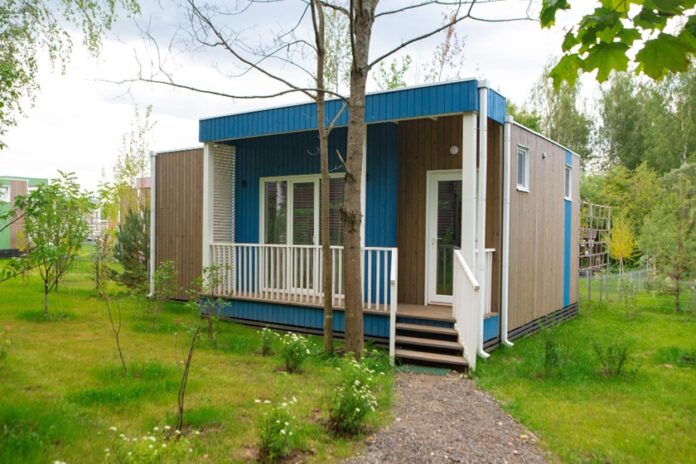Australia is known for its stunning landscapes and beaches and is surrounded by the Indian Ocean to the west, the Pacific Ocean to the east, and the Southern Ocean to the south. It has witnessed the growing interest in small-scale residences. However, despite this trend, research from 2014 reveals that the number of people residing in small houses has remained the same, including mobile ones. This blog explores the innovative and sustainable world of tiny homes in Australia, highlighting their role in reshaping living standards and societal community dynamics.
Maximising Small Spaces: Innovative Living Down Under
Living in smaller, more efficient spaces has gained significant traction worldwide in recent years. This trend is particularly evident in tiny homes in Australia, where innovative design and sustainability merge to create unique living solutions. These compact dwellings are not just a testament to minimalist living; they represent a broader shift in societal values towards simplicity, eco-friendliness, and financial freedom. Embracing this lifestyle means prioritising experiences over possessions, fostering a deeper connection with the environment, and redefining what it means to have a ‘dream home’.
The Appeal of Compact Living
Small Houses are popular because they provide a simpler lifestyle without the financial strain of traditional homeownership or the constraints of having an abundance of material belongings. In the country, where the cost of living and housing prices continue to soar, these small-scale residences present an attractive alternative. They offer the essentials of a comfortable home without the extensive maintenance or hefty mortgage that typically accompanies more significant properties. This shift is not just about downsizing physical space; it’s about upsizing the quality of life.
Design and Innovation
When it comes to small houses, design and innovation play a crucial role. Architects and builders constantly push the boundaries to see how small spaces can be transformed into fully functional living areas. To maximise space, these residences often incorporate multi-purpose furniture, innovative storage solutions, and lofted bedrooms. The use of vertical space is particularly ingenious, allowing for a surprising amount of functionality to be packed into a compact footprint.
Sustainability at Its Core
Sustainability is another cornerstone of the home movement. Several of these residences have solar panels and other renewable energy sources built into their architecture. Rainwater harvesting and composting toilets are standard features, reducing the residents’ ecological footprint. In the country’s diverse climate, small houses are often designed with energy efficiency in mind, utilising insulation and strategic window placement to maintain comfortable indoor temperatures.
Community and Lifestyle
The home movement is not just about the houses themselves; it’s also about the lifestyle and community that come with them. These small dwellings often foster community among residents, who share common spaces and resources. Community-oriented living can lead to stronger social connections and a supportive network, which is particularly appealing worldwide.
Challenges and Opportunities
Despite their many benefits, tiny homes in Australia face particular challenges. Zoning laws and building regulations can be restrictive, often not accounting for the unique nature of these dwellings. However, this has also opened advocacy and policy change opportunities, as enthusiasts and builders work together to promote the benefits of small living and seek more accommodating legal frameworks.
The Future of Small Houses
Looking forward, home movement shows no signs of slowing down. As environmental concerns and the desire for a more sustainable lifestyle continue to grow, these compact dwellings will likely play a significant role in the future of housing. They offer a practical solution to housing affordability while aligning with environmental stewardship and community living values.
Conclusion
Tiny homes in Australia represent more than just a trend; they are part of a growing movement towards rethinking what home living can look like. These small spaces are making a significant impact by embracing minimalism, sustainability, and community. As people continue to explore innovative ways to live in smaller, more efficient houses, the house movement stands as a beacon of what is possible when creativity and sustainability converge.

